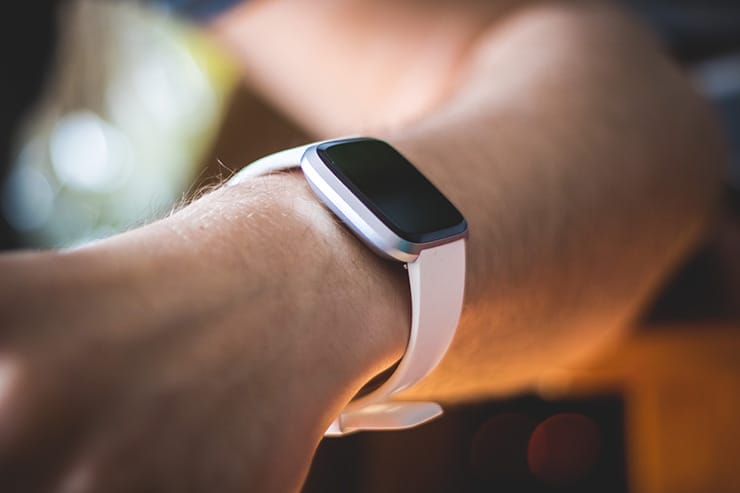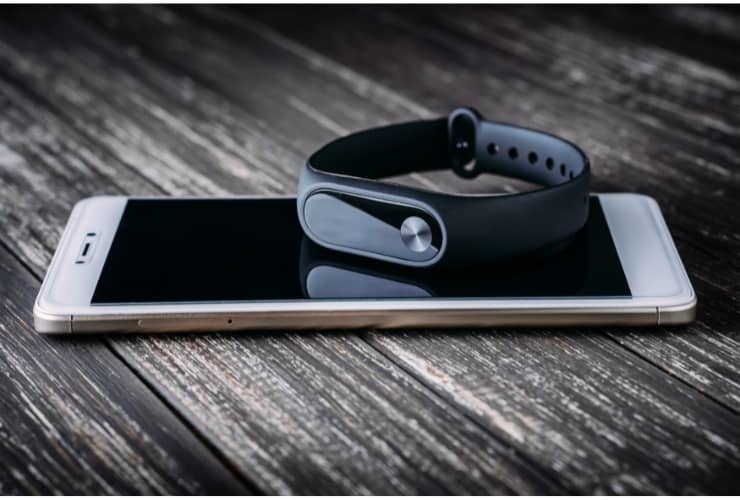Like many other fitness trackers, your Fitbit can automatically track physical activity and generate useful statistics to help you reach your fitness goals.
However, your Fitbit device can’t automatically detect indoor cycling. So how do you track a stationary bike on Fitbit?
Fortunately, there’s an easy solution to this. By the end of this article, you’ll know how to track and record your indoor bike workout in two different ways.
Key Takeaways
- You can track a stationary bike on Fitbit by adding spinning as an exercise shortcut on the Fitbit app and starting the workout manually on the Fitbit device before cycling.
- Alternatively, you can manually input your fitness details into the Fitbit app after you finish working out on your indoor trainer.
- To make sure the workout stats are accurate, wear the Fitbit correctly on your wrist, keep it charged and updated, and avoid putting it on your ankle.
- Tracking a stationary bike on Fitbit is possible and beneficial as it can record active zone minutes and help you reach your fitness goals.
- You can also use the Fitbit app to track your heart rate during the stationary bike workout and monitor your progress over time.
How Does Fitbit Track Exercises?
Before you learn how to track your stationary bike with a Fitbit, it’s worth gaining a better understanding of how Fitbit tracks fitness and activity in general.
The Fitbit device goes on your wrist and tracks a few different metrics throughout the day. First, it tracks the number of steps you take as well as the total distance you travel.
Similar to the apple watch, the way the device counts steps is by analyzing the motion and swing of your arm. The step-tracker is one of the main fitness features that people use this device for.
Fitbit can also monitor your heart rate during cardio activities. The device can automatically detect and track certain activities such as walking, running, outdoor biking, aerobic activities and other high-movement activities.
While Fitbit can automatically detect certain activities such as those listed above, you will need to manually track indoor cycling (also called spinning). I will explain exactly how to do this below.

Will Fitbit Log My Stationary Bike Exercise As Steps?
Something to keep in mind is that it is possible for Fitbit to track steps while you are indoor cycling.
This is because, as mentioned above, the device detects steps from the swing of your arms. So the next time you cycle indoors, pay attention to how much you move your arms.
For those who hold the handlebars the entire time, the Fitbit likely won’t track very many steps. Those who bike ride with their hands off to the side may see a higher number of recorded steps.
So, ultimately, your exercise history, or specifically the number of steps you have taken, may not be 100% accurate after a spin workout.
Will Fitbit Calculate the Distance I Ride on a Stationary Bike?
Most Fitbit devices will track the distance you’ve covered on an outdoor bike.But will it track distance while indoor cycling?
The two things that help a Fitbit to measure distance are the built-in GPS and accelerometer. However, these two instruments will not activate on a stationary bike; the accelerometer will not sense the vibrations as it does on a real bike, while the GPS has no physical distance to track.
Even though the connected GPS and accelerometer don’t work when indoor training, you still have the option to manually input distance.
If you have an external device that shares the distance you’ve ridden while indoor cycling, you can use the Fitbit app to input distance.
Fortunately, most indoor cycling machines will track distance. All you have to do is input the data into your watch when you are finished.

Will Fitbit Track My Stationary Bike Exercise If I Put It on My Ankle?
If you want to get the most out of your activity tracker, you may be wondering if you can simply track indoor cycling by putting the device on your ankle. That way, you can save time by not having to manually track exercise.
So will your Fitbit sense movement if you do this? It will, but the results may not be accurate.
While your Fitbit will track movement and record stats if you put it on your ankle, the activity details, such as your heart rate and calories burnt, will not be precise.
Your best bet is to follow the instructions below and use Fitbit properly to accurately record your activity.
Step-by-step Guide: Tracking a Stationary Bike With Your Fitbit
Since your Fitbit can’t track activity automatically on a spin bike, you will need to manually enter and start the workout. I will explain how to do this below in four easy steps.
These steps should work for all Fitbit models, whether you have an older version or the newest device.
Step One: Login to the Fitbit App
The first thing you need to do to manually track your indoor cycling is to log in to your Fitbit app.
If this is your first Fitbit, you’ll need to download the app and create an account.
Most people will have the app on their phones, but you can also download it to your computer or tablet. The app is available on the Microsoft store, Apple store and Google play store.
From the Fitbit app dashboard, tap the profile section in the top left corner. Now you’re ready for the next step.
Step Two: Add Spinning to Your Exercise Shortcuts
The next thing you want to do is add an activity shortcut. To do this, head to your device page from your profile page.
You will see your Fitbit device name in your profile section; just tap on the device name. Scroll down until you see ‘exercise shortcuts.’
Depending on the model you have, you will be limited to either six or seven options in the activity shortcuts section.
If you already have six or seven shortcuts, you’ll need to delete one to be able to add another.
Once you have room for additional shortcuts, you’ll see a plus sign icon in the top right corner.
Click the plus sign and select spinning (each exercise option will have a box beside it; once you click, a checkmark will appear beside your selected exercise). Once you tap add, it’ll appear in the shortcuts list.
The Fitbit community recommends manually syncing your watch after doing this; sometimes, it can take a few moments for the shortcut to appear.
If you’re still having trouble seeing the new shortcut after a few hours, you may need to consider a factory reset for your watch.
If you found these steps a bit confusing or want a more visual example, be sure to check out this video explaining how to add new shortcuts to your Fitbit device using the app:
Step Three: Change the Order of Your Activity Shortcuts
This step is more of a useful tip than a required action; however, it’ll make your life a bit easier and save your battery life in the meantime.
First, open your app and find the activity shortcuts page. All you have to do is hold and drag an activity to change the order of the list.
For example, if you take the spinning shortcut and move it all the way to the top, this will be the first activity you see when you open the exercise tile on your watch.
Once you set this up, it will only take a few seconds to start tracking your activity the next time you cycle.
Step Four: Start Your Workout
Now that you’ve added spinning to your Fitbit app, all you have to do is navigate to the exercise app on your device and select spinning. Simply tap on the spinning icon and tap again when you see the start icon.
Once you start exercising, the device will automatically track a few different statistics like calories burned, speed, time and heart rate.
Here is a video that shows you how to start your workout on your Fitbit device:
How to Make Sure Workout Stats Are Accurate
Since you’ve gone through the trouble of manually adding spinning as an exercise, you’ll want to make sure your cycling statistics are accurate.
There are a few things you can do to make sure you’re getting accurate results. First, make sure the Fitbit is positioned correctly on your wrist. Most Fitbit devices will work best positioned about two fingers below the wrist bone.
Next, make sure the Fitbit device is not too tight or too loose. Ideally, it should fit snugly but not tight enough that it feels uncomfortable (remember your wrists will swell slightly during exercise, so it needs a little room).
Following these tips for wear are important for two reasons. One, having your Fitbit in the correct position will allow the device to accurately read your pulse.
Two, making sure that the watch is not too tight will prevent the band from restricting your blood flow and affecting the readings.
You should also make sure your Fitbit is fully charged and ready to go. Depending on the model you have, a single Fitbit charge can last anywhere from five hours to four days.
Finally, if you’re finding that the stats are not very accurate, you may want to update the Fitbit app on whatever device you have it on. Updating the app can sometimes improve the accuracy of the statistics.
How to Record Your Stationary Bike Workouts With Fitbit
While you can always manually start an indoor cycling exercise, there are a few other options you can take advantage of.
Instead of starting workouts beforehand, you can also manually input your fitness details into the Fitbit app after you finish working out on your indoor trainer.
This section will explain how to do this through the Fitbit app dashboard, the IOS app and the android app.
Dashboard
If you want to log your indoor cycling from your computer, you’re in luck. All you have to do is visit the Fitbit website and log in.
Navigate to activities and type spinning in the search field. Once you enter the duration and start time of your exercise, the app will automatically calculate the number of calories burned while cycling.
After manually entering workouts into the dashboard tracker, you’ll be able to see them in your activity history.
IOS App
To track your cycling on the IOS Fitbit app, open the exercise panel from the dashboard. You’ll see a stopwatch icon near the top right; click this and tap the log icon.
Much like how you would on the dashboard, search for spinning and enter your exercise details like the duration and start time.
Once you hit add, the indoor cycling activity will be logged. You’ll be able to see it in your history.
Android App
Tracking your workouts on the android app will be very similar to how you do it on the IOS app.
Once you open your android app, click on the exercise tile that says ‘track exercise.’
Now find the stopwatch icon near the top right and click on it. You’ll see a button that says ‘log previous;’ click on this and add spinning.
Enter the details of your workout. Once you’re done, click log.
Final Thoughts on Tracking a Stationary Bike on Fitbit
Just because your Fitbit can’t detect a stationary bike workout doesn’t mean you can’t track it.
Simply add spinning as a shortcut and start cycling. While you will have to start the workout yourself every time you hop on your bike, you’ll still be able to record your active zone minutes and get the most out of your Fitbit.
You also have the option to record your activity after by inputting your workout data through the android, IOS or dashboard Fitbit app.
Be sure to leave a comment and share this article if you enjoyed it!

